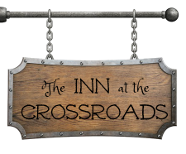To celebrate the release of the Dornish eCookbook, From the Sands of Dorne: A Feast of Ice & Fire Companion Cookbook, here’s a quick and easy recipe that didn’t quite fit in the new book: Helva. It’s essentially sort of like a Middle Eastern shortbread, with butter, flour, sugar, and in this case, just a
I have some eclectic hobbies. Granted, there are a number of perfectly good reasons I might have a rather sizable collection of sealing wax and seals. I do run a quasi-medieval blog, after all. But if I’m honest, it’s partly just that I’m addicted to the things. They are seriously cool! So while planning for
“Nutmeg has great heat and good moderation in its powers. If a person eats nutmeg, it will open up his heart, make his judgment free from obstruction, and give him a good disposition. Take some nutmeg and an equal weight of cinnamon and a bit of cloves, and pulverize them. Then make small cakes with
So, I saw these quinces in the store about a month back, and was very excited. Quinces were very popular in historical cooking, and I thought to myself, “Great! I can make all sorts of things!” Starting with quince paste, because it goes well with cheese, and I happen to love me some cheese. As
A few months ago, in my quest to find more campfire-capable recipes for my repertoire, I flipped through one of my favorite medieval cookery books, The Opera of Bartolomeo Scappi. I don’t even have the words right now to tell you how much I love this book. In fact, it probably deserves its own post,
Thoughts: I had my doubts about this one, but once again, our culinary ancestors were onto something. There are countless recipes for syllabubs throughout historical cookbooks, at least back into the 16th century. They also seem to come in two basic versions- in the first, a cow was milked directly into a jug of cider
Thoughts: During the colonial period in America, many early cookbooks made references to “indian” dishes, or “indian meal”. This simply meant dishes that included cornmeal, which was a primary staple food for many native tribes, and a somewhat novel ingredient to the European colonists. Indian Pudding was essentially the New England counterpart to traditional English
Thoughts: Now, don’t get too excited by the term “cake”, because these are much more like flapjacks, johnnycakes, or pancakes that a proper fluffy birthday cake sort of a treat. They’re based on a recipe from 1786 for “Indian Slapjack”, from the book, “American Cookery”, one of the earliest American recipe collections. I tried a
So some of you might remember that I posted this photo on FB with some obscure hints about holiday cooking: Well, here is the big reveal: They’re breadsticks in the shape of wheat sheafs! How fun is this? That photo above was just the practice run, and I decided that I wanted to get something
“Arrived at Dr. Tufts where I found a fine Wild Goose on the Spit and Cranberries in the Skillet for Dinner” – John Adams, April 8, 1767 For the first of my colonial Thanksgiving recipes, I’m starting with the basics. Even I, a former picky eater, would have to agree that no Thanksgiving is complete without cranberry










